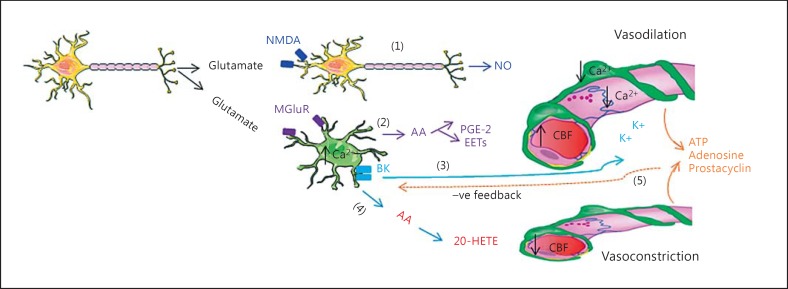Fig. 2.
A simplified diagram of paracrine signaling in the neurovascular unit. Neuronal activity (i.e. glutamate release) induces vasodilation through its action on interneurons or astrocytes. As a response to this stimulation, interneurons release NO (1), while astrocytes induce vasodilation through several mechanisms (2, 3). In addition to that, astrocyte-derived AA (4) could be metabolized into 20-hydroxy-eicosatetraenoic acid (20-HETE) in smooth muscle cells, which then induces vasoconstriction. Signaling from capillaries affects the tone of vascular smooth muscle cells via astrocytes (5). PGE-2 = Prostaglandin E2; EETs = epoxyeicosatrienoic acids.

